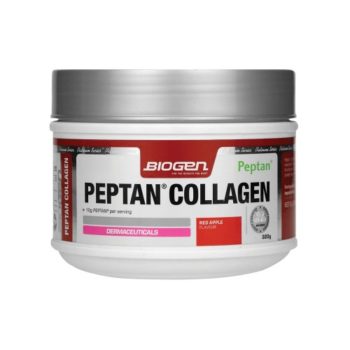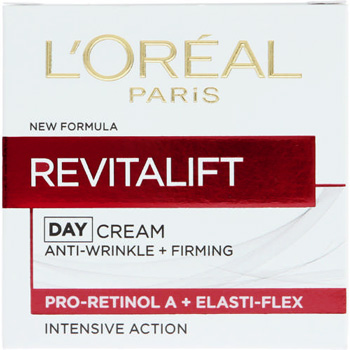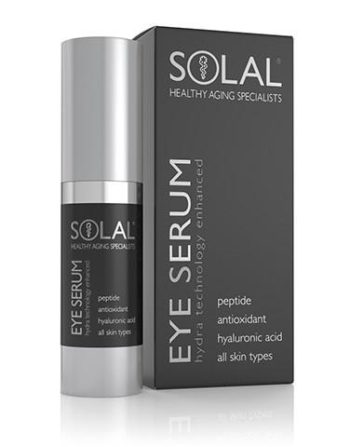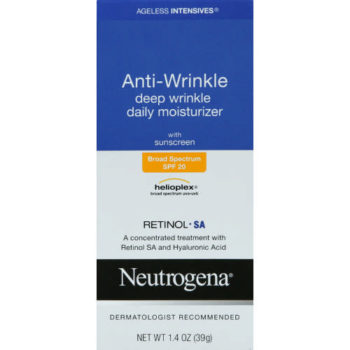We all get different types of wrinkles, from crow’s feet to lines around our lips and under our eyes. And while wrinkles and laughter lines are a normal, natural part of ageing, we also appreciate that deep wrinkles and sagging skin can affect our confidence.
ALSO SEE: Our pick of the best anti-ageing products
Why do we get so many different types of wrinkles?
While some don’t experience their first crease or line until their 40s, others will start to notice small lines and creases in their 30s – or even their 20s.
The onset of wrinkles (on the face, neck and chest area) is a natural part of the ageing process and is generally down to a lack of collagen fibre or injured elastic fibre as we grow older.
However, that doesn’t mean that we wouldn’t all like there to be a little less of them! So how do we embrace what we have, and what can we do to target and treat different types of wrinkles?
Although you can’t prevent wrinkles 100% without taking drastic measures, there are a few things you can do to improve the overall texture and appearance of your skin.
ALSO SEE: How to disguise lines around your lips
Take note of environmental factors
There are several environmental factors that can contribute to wrinkles worsening. Smoking, pollution, and sun damage can all affect the composition of our skin, and how many wrinkles we have.
Strategy: Ensure you cover up, douse your face in SPF 50+, and stay as healthy as possible, if you want to try and reduce the number of wrinkles you have.
Make the right lifestyle choices
Avoid dehydration
Your own lifestyle choices can also affect how many wrinkles you see on your skin. For instance, dehydrated skin can be more prone to developing wrinkles.
Strategy: It’s key to keep your skin hydrated both inside and out. How do you do this? By drinking plenty of water and fluids such as herbal tea, as well as using good-quality skincare products.
If you have particularly dry, wrinkle-prone skin, look for products that contain hyaluronic acid. This natural substance can hold up to 1000 times its weight in water and if you apply it regularly, skin automatically retains more moisture and looks plumper and firmer.
Steer clear of extreme diets
Extreme dieting has a direct effect on wrinkles too. People who have lost drastic amounts of weight, or those who have yo-yo dieted throughout their lives, are likely to have more wrinkles as there’s a surplus of loose, sagging skin.
Plus, a poor diet lacking in essential vitamins, minerals and nutrients can leave the skin looking dull and lifeless.
Strategy: Stick to a healthy, balanced diet rich in antioxidants, vitamin E and essential fatty acids.
Get enough sleep
There’s also so much truth to the saying, “Get your beauty sleep!” Your body repairs itself and recovers when you sleep, and literally boosts your complexion. The less sleep you get, the less chance your skin has to make new collagen, which helps to prevent wrinkles and sagging.
Sleep deprivation also causes the skin to appear dull and dry. This is because there’s increased blood flow to your skin when you sleep, which gives you that glowing complexion when you wake up.
Strategy: Aim to get at least 7-9 hours of good-quality sleep per night. If you’re struggling to sleep, you could also try a peptan collagen supplement which helps to rebuild and repair skin tissue, while keeping existing collagen structures within the skin, intact.
ALSO SEE: Is your sleep position ageing you?

Biogen Peptan Collagen, R309, Dis-Chem
How to treat different types of wrinkles
Crow’s feet – aka laughter lines
Crow’s feet – one of the most well-known wrinkles – usually radiate out from the corner of your eyes. Most noticeable when you squint, they’re mostly caused by habitual squinting and laughter.
Other common causes include dryness around the eye area, given that the skin around the area secretes the least oil.
How to treat them: Retinol based products have been proven to minimise the appearance of deep crow’s feet. Retinol contains collagen-boosting properties, helping to plump up your skin and reduce the appearance of fine lines around the eyes.

L’Oreal Paris Revitalift Eye Cream, R184.99, Dis-Chem
Lines under eyes
Wrinkles under your eyes, as opposed to radiating out of your eyes, develop in similar ways. They can also be caused by continual creasing of the face, and regularly heading out in the sun without sunglasses.
How to treat them: Serums specifically targeted for under-eye use can certainly be helpful, in that they can help keep the area hydrated and moisturised.

Solal Eye Serum, R249, Bamboo Health
Frown lines
These pesky little things usually occur as lines across the length of our forehead. However, they can also put in an unwelcome appearance between our brows too.
Generally, when we’re younger, these types of lines appear on our faces when we frown, but go away when we stop frowning. However, as we get older, many of us notice that these wrinkles take up a permanent spot on forehead, even if we aren’t frowning.
While forehead lines are a natural part of getting older, they can be made worse with various environmental factors. These specific wrinkles may be trying to tell you that your face has been exposed to too many adverse lifestyle factors.
For example, it’s widely known that smoking damages your DNA, meaning skin can’t repair itself. Stress and pollution can also reduce the amount of collagen in your skin, which will cause it to look dull.
How to treat them: If you’re not a fan of fillers or botox, there are less invasive treatments, such as chemical peels, laser skin treatments, and microdermabrasion. These all work to rid your skin of its top layer, allowing it to replenish itself.
ALSO SEE: The most effective anti-ageing ingredients to look out for
Smile lines
Smile lines are the creases you see that travel from the outer edges of your nose down to the outer edges of our mouth. Generally smile lines become more pronounced as we get older, although they’re often visible in younger people when they smile.
These wrinkles, like all others, come from a lack of collagen and elastin in your skin as you age. Smoking and sun damage can also worsen these lines, making them deeper than they may have been.
How to treat them: Unfortunately, there’s no foolproof way to rid yourself of wrinkles completely – unless you’re willing to resort to more extreme measures, such as botox.
Other than ensuring you stay hydrated, protect your skin from the sun and attempt to wipe away the effects of pollution at the end of the day, topical treatments such as creams and serums can help to reduce the appearance of fine lines.
Retinol, or skincare products which are rich in peptides and collagen-building proteins, are generally the best if you’re looking to smooth out your skin.

Neutrogena Ageless Intensives Deep Wrinkle Daily Moisturizer, R200

